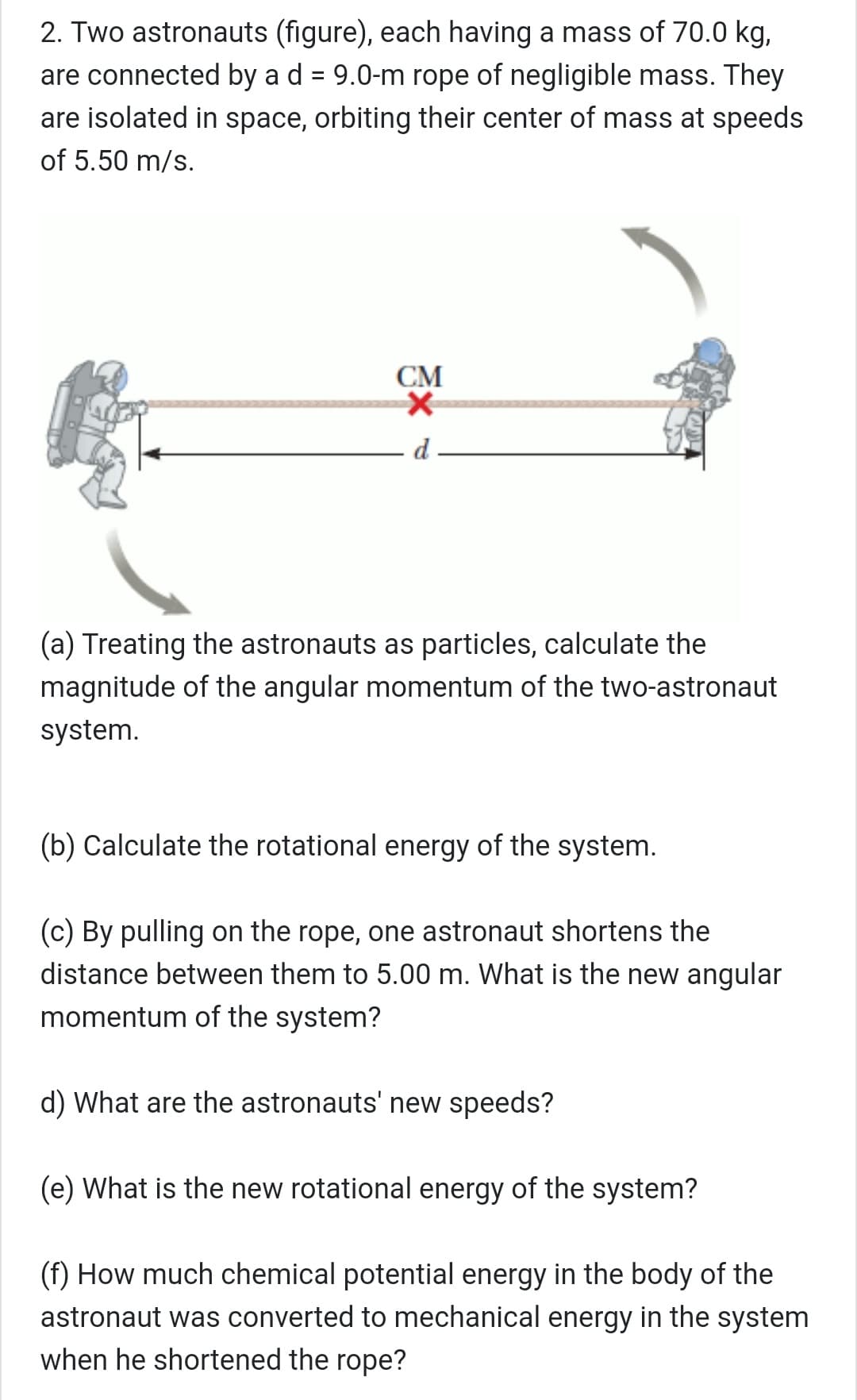2. Two astronauts (figure), each having a mass of 70.0 kg, are connected by a d = 9.0-m rope of negligible mass. They are isolated in space, orbiting their center of mass at speeds of 5.50 m/s. CM d (a) Treating the astronauts as particles, calculate the magnitude of the angular momentum of the two-astronaut system.
2. Two astronauts (figure), each having a mass of 70.0 kg, are connected by a d = 9.0-m rope of negligible mass. They are isolated in space, orbiting their center of mass at speeds of 5.50 m/s. CM d (a) Treating the astronauts as particles, calculate the magnitude of the angular momentum of the two-astronaut system.
Related questions
Question
Sub Parts (D,E,F)

Transcribed Image Text:2. Two astronauts (figure), each having a mass of 70.0 kg,
are connected by a d = 9.0-m rope of negligible mass. They
are isolated in space, orbiting their center of mass at speeds
of 5.50 m/s.
СМ
d
(a) Treating the astronauts as particles, calculate the
magnitude of the angular momentum of the two-astronaut
system.
(b) Calculate the rotational energy of the system.
(c) By pulling on the rope, one astronaut shortens the
distance between them to 5.00 m. What is the new angular
momentum of the system?
d) What are the astronauts' new speeds?
(e) What is the new rotational energy of the system?
(f) How much chemical potential energy in the body of the
astronaut was converted to mechanical energy in the system
when he shortened the rope?
Expert Solution
This question has been solved!
Explore an expertly crafted, step-by-step solution for a thorough understanding of key concepts.
This is a popular solution!
Trending now
This is a popular solution!
Step by step
Solved in 4 steps with 4 images
